Category: Ricerca
Formation and evolution of the Sco OB2 association. The study: “Stellar population of Sco OB2 revealed by Gaia DR2 data” of F. Damiani (INAF-OAPA) recently appeared on A&A
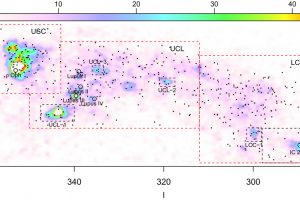
OB associations have a rich population of massive stars (O and B stars), which are young and typically dispersed over large regions of the sky. While these massive stars can be easily recognized thanks to their intense luminosity, it is very hard to select the low mass stars belonging to OB associations. This because without evident stellar concentrations, these stars
» Read moreFlares and X-ray fluoresence in protostars. The study: “Deep X-ray view of the Class I YSO Elias 29 with XMM-Newton and NuSTAR” of I. Pillitteri (INAF-OAPA) recently appeared on A&A
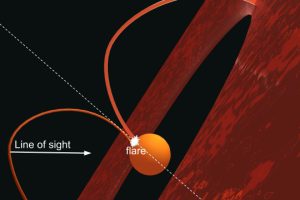
“Protostars” are stars a few million years old, which are still accreting gas and contracting for their own gravity, and whose nucleus has not reached yet the temperature and pressure necessary for the onset of thermonuclear reactions. The youngest protostars are still surrounded by a protoplanetary disk of gas and dust (class II protostars) or even by an accreting envelope
» Read moreThe chronology of star formation in NGC 6530. The study: “Wide-area photometric and astrometric (Gaia DR2) study of the young cluster NGC 6530” of F. Damiani (INAF-OAPA) recently appeared on A&A
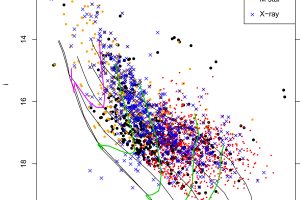
Stars form from the gravitational collapse of large interstellar clouds. During the process, the clouds fragment in smaller clouds, forming clusters and associations of stars counting from few tens to several hundred thousands stars. The star formation process typically is not a monolithic process, e.g. with a single large event of star formation occurring rapidly and forming all the stars
» Read moreSuper-flares in the Pleiades. The study: “Simultaneous Kepler/K2 and XMM-Newton observations of superflares in the Pleiades” of M. G. Guarcello (INAF-OAPA) recently appeared on A&A
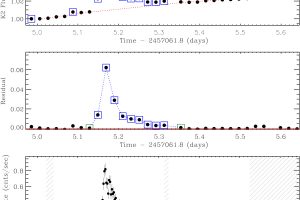
Observations of the Sun show that our star hosts transient and violent phenomena which are due to the interaction between the plasma and the magnetic field produced in the interior of the Sun. Typical examples of this “magnetic activity” are the sunspots in the photosphere and the protuberances in the chromosphere. The solar flares are among those phenomena associated with
» Read moreA new super-Earth around an M star. The study: “HADES RV program with HARPS-N at the TNG. IX: A super-Earth around the M dwarf Gl 686” of L. Affer (INAF-OAPA) recently appeared on A&A
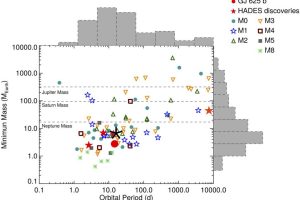
Low mass star (in particular M-type star, with a mass between 0.075 and 0.5 solar masses) are typical targets for the search and study of exoplanets. In these stars, in fact, the radial velocity method is more efficient than in stars with higher mass. Radial velocity consists in detecting periodic oscillations in the stellar spectra due to the motion of
» Read morePlanets migrations and impacts. The study: “A giant impact as the likely origin of different twins in the Kepler-107 exoplanet system” of A. S. Bonomo (INAF– OA di Torino) recently appeared on Nature Astronomy
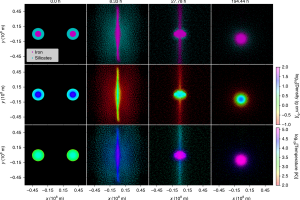
Exoplanets with a radius smaller than 3 Earth radii span a wide range of characteristics. In fact, both low density sub-Neptunian and high-density Earth- and Mercury-like planets have been observed with such a radius. This diversity suggests that these planets, despite being formed in a similar way, followed different evolutionary patterns depending on the characteristics of their host stars, the
» Read moreNanoflares and the heating of solar corona. The study: “Statistical Signatures of Nanoflare Activity. I. Monte Carlo Simulations and Parameter-space Exploration” of D. B. Jess (Queen’s University Belfast) recently appeared on ApJ.
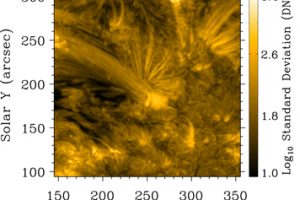
There are still secrets of our Sun that the scientific community struggles to unveil. One of this is the mechanism responsible for the heating of solar corona. While the photospheric plasma has a typical temperature of about 5700 degrees, in fact, the plasma in the solar chromosphere and corona is hotter: about 10000 degrees in the chromosphere and 1-2 millions
» Read more31 years of evolution of a supernova remnant. The study: “3D MHD modeling of the expanding remnant of SN 1987A. Role of magnetic field and non-thermal radio emission” of S. Orlando (INAF-OAPA) recently published by A&A
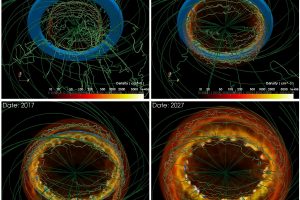
During the 1987 February 23rd night, astronomers observed the explosion of a supernova in the Large Magellanic Cloud, a satellite galaxy of the Milky Way. The exploded star was the blue supergiant Sanduleak (Sk) − 69o202, with a mass of 20 solar masses, and its explosion produced the supernova remnant SN 1987A. From that moment, SN 1987A was observed with
» Read moreThree super-Earth for a star. The study “Masses and radii for the three super-Earths orbiting GJ 9827, and implications for the composition of small exoplanets” of K. Rice (University of Edinburgh) published by MNRAS
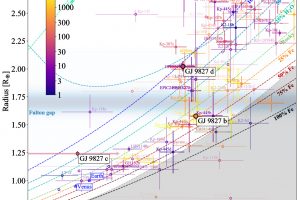
Super-Earths are exoplanets with radii between that of the Earth and that of Neptune (about 4 times the radius of the Earth), and with orbital periods smaller than 100 days. Although the Solar System does not host a similar planet, super-Earths are actually common in the Milky Way. This type of exoplanet is also interesting since they populate a gap
» Read more
